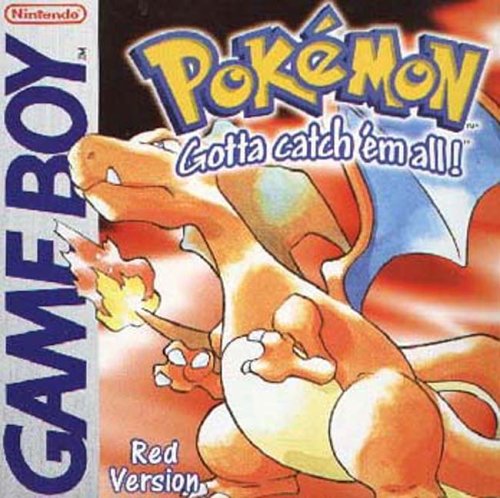The Pokémon series has had me captivated from a very young age. Even before I started playing the games, I was obsessed with the Pokémon themselves and collected cards and figures. What I find interesting is each Pokémon game is the same. You choose between 3 starter Pokémon, collect and battle them, and earn gym badges. Why is this series so popular if the player is doing the same thing every time? What makes each game different and unique makes somebody want to replay it and buy a newer version? There are even two versions of each game released together. What is the purpose of choosing one over the other?
While playing Red, I asked myself these questions and thought about what I liked and didn’t like about Pokémon and how the games had changed. Immediately, the first thing anybody notices when playing Red is how everything is in different shades of red. Comparing this first generation of Pokémon games, despite not playing others in this generation, it would be interesting to explore the possible different experiences the colors have on the player. Pokémon Blue and Green are in their respective colors, and I wish I had chosen to play one of those instead. I can’t help but feel that playing the game in red is the worse way to experience it. The colors blue and green are much more relaxing colors. It would have been better than staring at a red screen for hours, although the contrast of the green players to the red background was nice.
Though the coloring is annoying, I think it is an essential element of the game. The fact that the title itself is Red emphasizes that, and it makes me feel like different versions are justified. The modern Pokémon games don’t use color in the same way that Red does. The version of the game a person chooses in the modern games only changes which version exclusive Pokémon the player can catch, and the plot slightly changes. The different modern versions don’t change the gameplay in any way that matters. Part of the massive success of Pokémon is this marketing of exclusivity and differences between games. This marketing capitalizing on the most enjoyable and exciting part of the game, the catching mechanism.
When playing Pokémon, my favorite part is finding and catching one I like. I could spend hours walking around in the grass, searching. There are several parts to catching a Pokémon that are enjoyable. The player encounters it. Then they fight it without making it faint and then wait for the Pokeball to click to capture it. This satisfaction creates a connection between the player and the game, especially when the player repeatedly uses them in battle. That is part of why I come back to these games. It is nice to take care of and raise a Pokémon. Although, this was not fleshed out in Red because the Pokémon look a lot more similar to each other, and they are more like avatars than pets compared to the later games.
However, Pokémon Red still carried the satisfaction of collecting everywhere throughout the game in similar ways. The player earns gym badges and finds hidden items. The leveling up and evolving of Pokémon are collecting too because your Pokémon gains XP or the evolved form of a Pokémon is added to the Pokédex. Later in the game series, shiny Pokémon, an extremely rare coloring of a Pokémon, get added to the game, creating a new way to play through shiny hunting. Even the design of Pokémon cards mimics the chance encounters of Pokémon. The buyer opens a pack hoping there’ll be some that you like creating the same feeling of excitement.
The in-game music also adds a lot to the game’s mood and popularity. I particularly like the change from the traveling music when walking through the routes in the game to the battle music when encountering a Pokémon. The first few seconds of whirling noise indicating danger or change is a smart way to change the player’s mood subtly for battle. Even though this game was made over 25 years ago, the iconic Lavender Town music is still talked about today because of how well the music reflects the creepy atmosphere of the town and ghost-type Pokémon.
Despite adding many new mechanics in the more recent games, like feeding or taking photos of your Pokémon, the series has not moved far away from the models created by Red and Blue since they are still rather enjoyable. I love Pokémon and could replay the games many times over. In fact, after getting around to finishing Red, I plan on playing Blue to discover whether or not the coloring of the game makes a difference to the experience.

